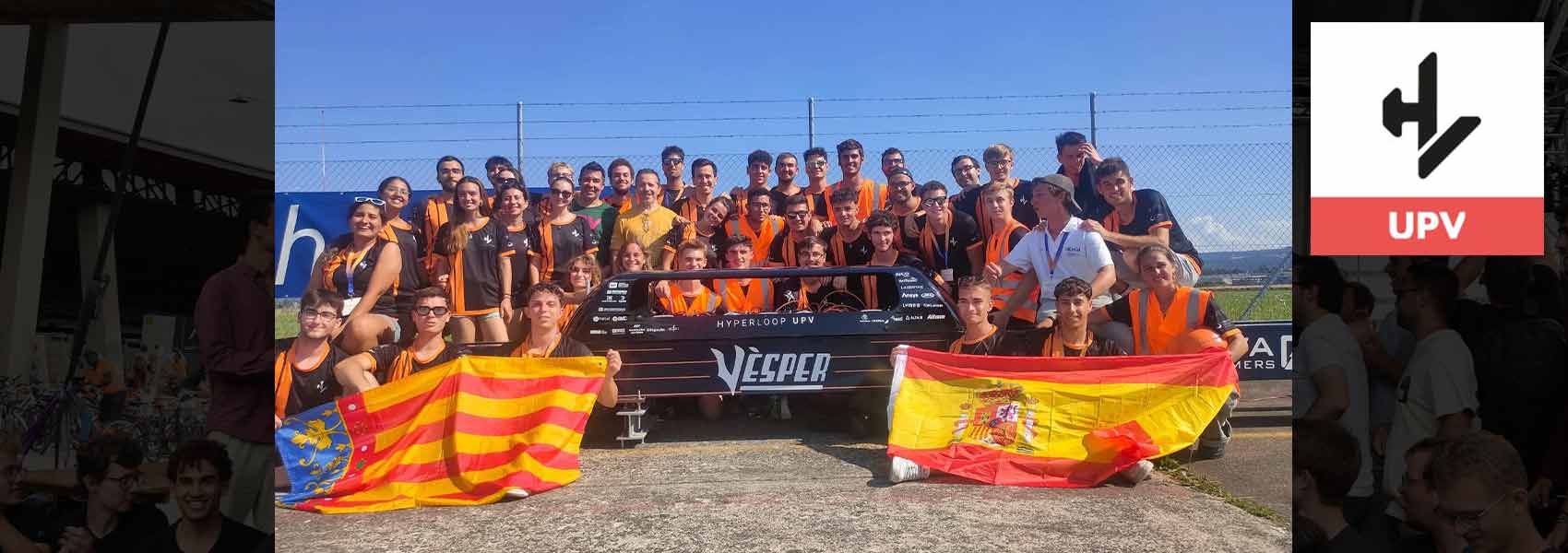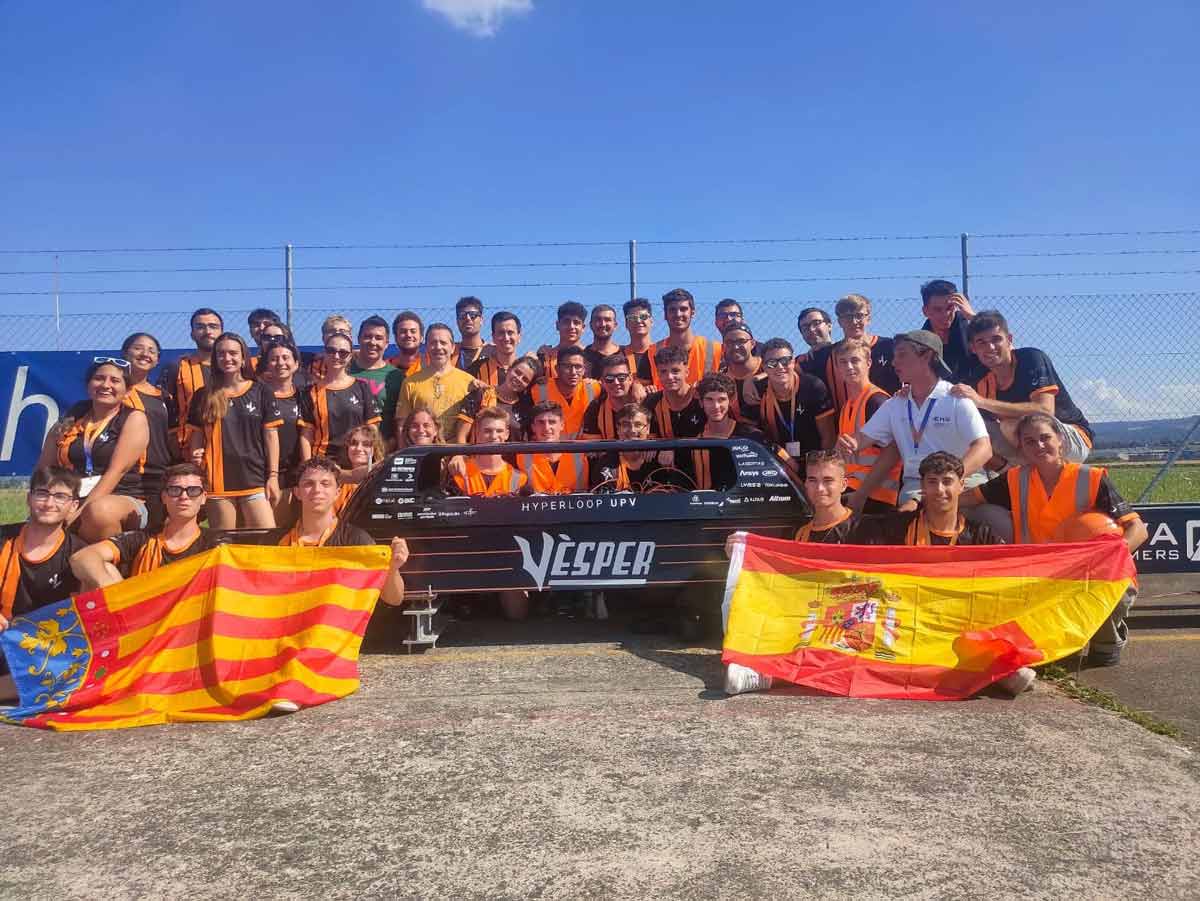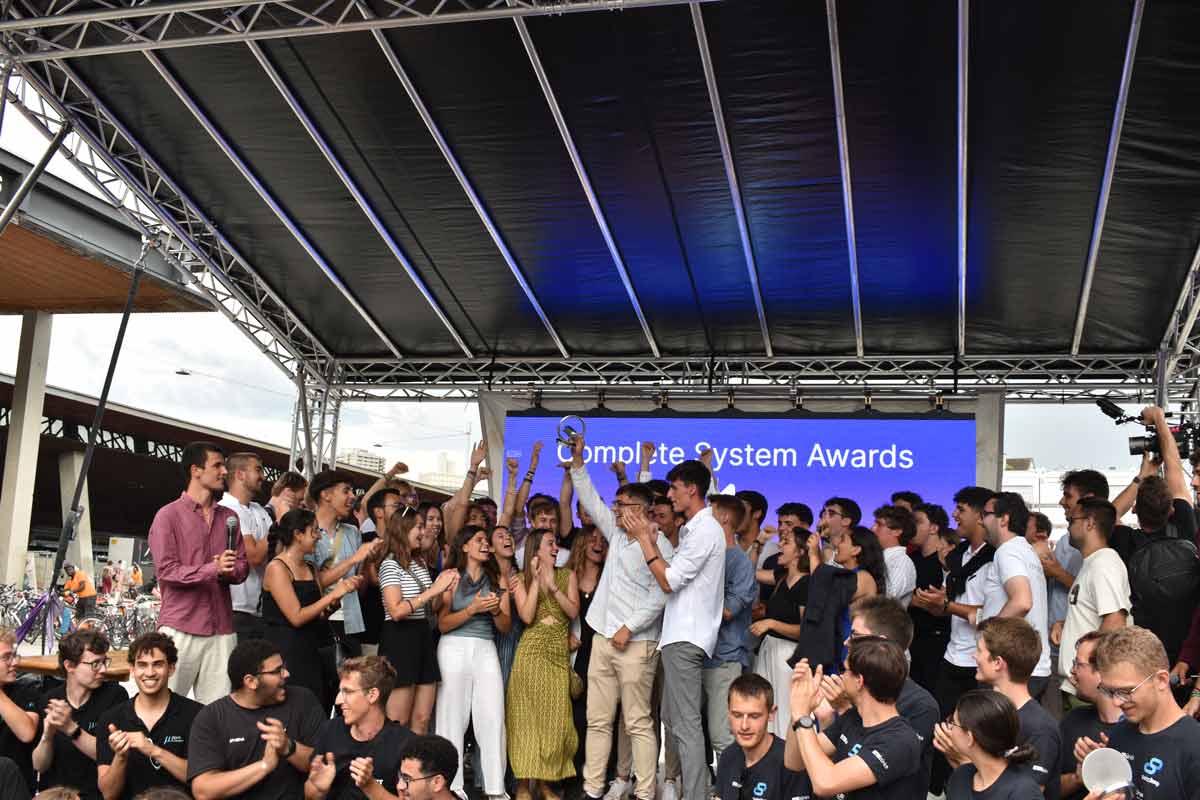Hyperloop UPV: Champions of Innovation, Builders of the Future

Hyperloop UPV – Eurocircuits
Picture a vehicle levitating effortlessly inside a near-vacuum tube, reaching speeds of around 1000 km/h. This is no longer just a concept that you can imagine – it’s what we, Hyperloop UPV, are bringing to life.

As a team of about 50 students from the Polytechnic University of Valencia, in Spain, we’ve spent years pushing the boundaries of what’s possible in transportation. Every academic year, we design and build our own hyperloop vehicle and we compete with it at the European Hyperloop Week (EHW), an international competition in which teams from all over the world take part in.
In our last edition, H9, we developed our vehicle Vèsper along with its necessary infrastructure: a 48-meter-long external track and a 9-meter-long tube, named Atlas. Back in July of 2024, our team travelled to Zürich to demonstrate everything we had been working on throughout the year, and we are very proud to say that we did not come back to Spain empty-handed: we won the Complete System Award, thus becoming world champions.

As we embark on a new season, we have new goals in mind. Building on last year’s success, we aim to innovate further while keeping sustainability and scalability at the heart of our vision – and, of course, it would not hurt to become champions once again!. Our main focus will be to continue maximizing the potential of our innovative on-track motor, the so called “Booster”. However, we will also be working on other objectives such as the implementation of on-board chargers and regenerative braking.
That is why in our project, electronics are a must. Our PCBs are the brains of our vehicle, they enable every single system to work properly. From controlling the levitation to powering the vehicle, every aspect of our project depends on the reliability and precision of our electronics.
Thanks to the support of Eurocircuits, we are able to bring our designs to life and we can rest assured that our boards meet the highest standards of quality and precision, which enables us to continue pushing the limits of innovation in a responsible and sustainable way.
As was stated before, one of the things we’re working on this year is the implementation of on-board chargers. Although the competition won’t take place until July, this is something that requires months of previous testing and preparation, and that is why the first PCBs that we have received are the ones that make up the Battery Monitoring System (BMS): BMSH, BMSA and HV-SCU.
The high-voltage system is managed by the High Voltage – Safety Control Unit (HV-SCU) and the Battery Management System High (BMSH). The HV-SCU, which acts as master for the BMSHs, is a 6-layer PCB, making it easier for power dissipation and routing, as it incorporates both HV and LV signals. It’s responsible for the monitoring of all the CMUs, the HV circuit safety measures and the charging control algorithm for the on-board charger (OBC), a 1.5kW bidirectional charger with an LLC topology. It is essential for this board to function properly at all times, since the oppposite could have serious ramifications in the HV system of the vehicle. Therefore, several HW mechanisms are placed to ensure everyhing operates as intended, both on the charger side and the delivery of power to the inverters.

Additionally, the board needs to comply with several high frequency design guidelines, as it incorporates Ethernet and very high frequency signals used to excite the resonant tank.
On the other hand, the BMSH manages battery cell monitoring. There is a BMSH for each of our high voltage battery cells, which makes a total of 18 BMSH boards.
The low-voltage system is managed by the Battery Management System Avionics (BMSA) board. Most of the high-speed design that apply to the HV-SCU also apply to this board, but it does not have to worry about the CMU nor the HV, since the cell voltage and temperature monitoring is done from the very same board.
Thanks to the support of Eurocircuits, our vehicle will be able to implement a safe and reliable Battery Management System.

For more information please visit the Hyperloop UPV website.





